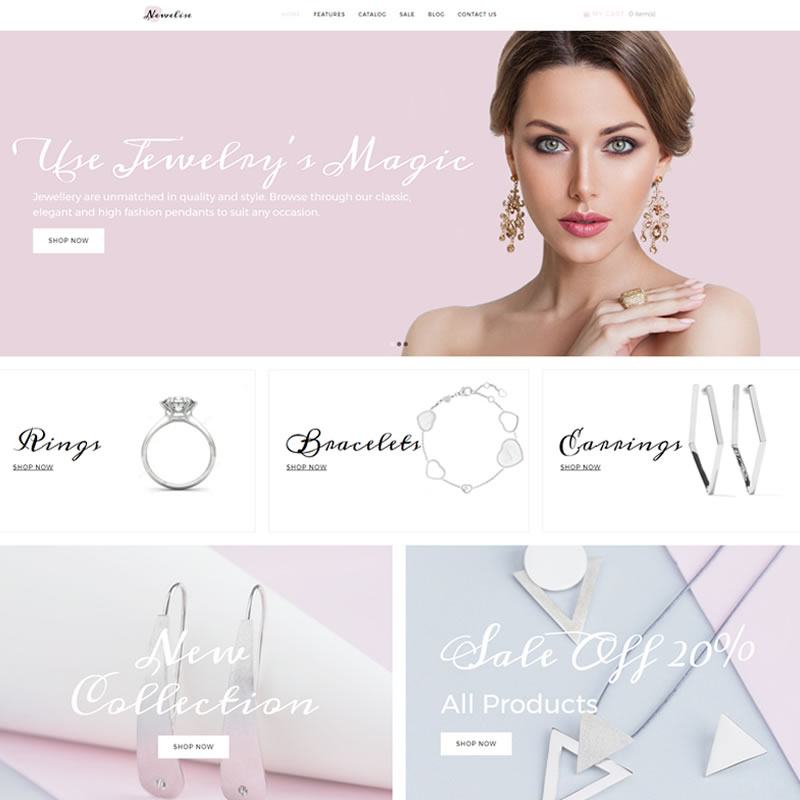
What Business To Buy
When most people think of starting a business, they think of beginning from scratch–developing your own ideas and building the company from the ground up. But starting from scratch presents some distinct disadvantages, including the difficulty of building a customer base, marketing the new business, hiring employees and establishing cash flow…all without a track record or reputation to go on.
In most cases, buying an existing business is less risky than starting from scratch. When you buy a business, you take over an operation that’s already generating cash flow and profits. You have an established customer base, reputation and employees who are familiar with all aspects of the business. And you don’t have to reinvent the wheel setting up new procedures, systems and policies since a successful formula for running the business has already been put in place.
When you buy a business, you take over an operation that’s already generating cash flow and profits.
Buying the perfect business starts with choosing the right type of business for you. The best place to start is by looking at an industry with which you’re both familiar and which you understand. Think long and hard about the types of businesses you’re interested in and which best match your skills and experience. Also consider the size of business you are looking for, in terms of employees, number of locations and sales. Next, pinpoint the geographical area where you want to own a business. Assess labor pool and costs of doing business in that area, including wages and taxes, to make sure they’re acceptable to you. Once you’ve chosen a region and an industry to focus on, investigate every business in the area that meets your requirements.
Following is a checklist of items you should evaluate to verify the value of a business before making a decision to buy
1. Inventory
Refers to all products and materials inventoried for resale or use in servicing a client. Important note: You or a qualified representative should be present during any examination of inventory. You should know the status of inventory, what’s on hand at present, and what was on hand at the end of the last fiscal year and the one preceding that. You should also have the inventory appraised. After all, this is a hard asset and you need to know what dollar value to assign it. Also, check the inventory for salability. How old is it? What is its quality? What condition is it in? Keep in mind that you don’t have to accept the value of this inventory: it is subject to negotiation. If you feel it is not in line with what you would like to sell, or if it is not compatible with your target market, then by all means bring those points up in negotiations.
2. Furniture, fixtures, equipment and building
This includes all products, office equipment and assets of the business. Get a list from the seller that includes the name and model number of each piece of equipment. Then determine its present condition, market value when purchased versus present market value, and whether the equipment was purchased or leased. Find out how much the seller has invested in leasehold improvements and maintenance in order to keep the facility in good condition. Determine what modifications you’ll have to make to the building or layout in order for it to suit your needs.
3. Copies of all contracts and legal documents
Contracts would include all lease and purchase agreements, distribution agreements, subcontractor agreements, sales contracts, union contracts, employment agreements and any other instruments used to legally bind the business. Also, evaluate all other legal documents such as fictitious business name statements, articles of incorporation, registered trademarks, copyrights, patents, etc. If you’re considering a business with valuable intellectual property, have an attorney evaluate it. In the case of a real-estate lease, you need to find out if it is transferable, how long it runs, its terms, and if the landlord needs to give his or her permission for assignment of the lease.
4. Incorporation
If the company is a corporation, check to see what state it’s registered in and whether it’s operating as a foreign corporation within its own state.
5. Tax returns for the past five years
Many small business owners make use of the business for personal needs. They may buy products they personally use and charge them to the business or take vacations using company funds, go to trade shows with their spouses, etc. You have to use your analytical skills and those of your accountant, to determine what the actual financial net worth of the company is.
6. Financial statements for the past five years
Evaluate these statements, including all books and financial records, and compare them to their tax returns. This is especially important for determining the earning power of the business. The sales and operating ratios should be examined with the help of an accountant familiar with the type of business you are considering. The operating ratios should also be compared against industry ratios which can be found in annual reports produced by Robert Morris & Associates as well as Dun & Bradstreet.
7. Sales records
Although sales will be logged in the financial statements, you should also evaluate the monthly sales records for the past 36 months or more. Break sales down by product categories if several products are involved, as well as by cash and credit sales. This is a valuable indicator of current business activity and provides some understanding of cycles that the business may go through. Compare the industry norms of seasonal patterns with what you see in the business. Also, obtain the sales figures of the 10 largest accounts for the past 12 months. If the seller doesn’t want to release his or her largest accounts by name, it’s fine to assign them a code. You’re only interested in the sales pattern.
8. Complete list of liabilities
Consult an independent attorney and accountant to examine the list of liabilities to determine potential costs and legal ramifications. Find out if the owner has used assets such as capital equipment or accounts receivable as collateral to secure short-term loans, if there are liens by creditors against assets, lawsuits, or other claims. Your accountant should also check for unrecorded liabilities such as employee benefit claims, out-of-court settlements being paid off, etc.
9. All accounts receivable
Break them down by 30 days, 60 days, 90 days and beyond. Checking the age of receivables is important because the longer the period they are outstanding, the lower the value of the account. You should also make a list of the top 10 accounts and check their creditworthiness. If the clientele is creditworthy and the majority of the accounts are outstanding beyond 60 days, a stricter credit collections policy may speed up the collection of receivables.
10. All accounts payable
Like accounts receivable, accounts payable should be broken down by 30 days, 60 days, and 90 days. This is important in determining how well cash flows through the company. On payables more than 90 days old, you should check to see if any creditors have placed a lien on the company’s assets.
11. Debt disclosure
This includes all outstanding notes, loans and any other debt to which the business has agreed. See, too, if there are any business investments on the books that may have taken place outside of the normal area. Look at the level of loans to customers as well.
12. Merchandise returns
Does the business have a high rate of returns? Has it gone up in the past year? If so, can you isolate the reasons for returns and correct the problem(s)?
13. Customer patterns
If this is the type of business that can track customers, you will want to know specific characteristics concerning current customers, such as: How many are first-time buyers? How many customers were lost over the past year? When are the peak buying seasons for current customers? What type of merchandise is the most popular?
14. Marketing strategies
How does the owner obtain customers? Does he or she offer discounts, advertise aggressively, or conduct public-relations campaigns? You should get copies of all sales literature to see the kind of image that is being projected by the business. When you look at the literature, pretend that you are a customer being solicited by the company. How does it make you feel? This can give you some idea of how the company is perceived by its market.
15. Advertising costs. Analyze advertising costs
It is often better for a business to postpone profit at year-end until the next year by spending a lot of money on advertising during the last month of the fiscal year.
16. Price checks
Evaluate current price lists and discount schedules for all products, the date of the last price increase, and the percentage of increase. You might even go back and look at the previous price increase to see what percentage it was and determine when you are likely to be able to raise prices. Here again, compare what you see in the business you are looking at, with standards in the industry.
17. Industry and market history
You should analyze the industry as well as the specific market segments of the business targets. You need to find out if sales in the industry, as well as in the market segment, have been growing, declining, or have remained stagnant. This is very important to determine future profit potential.
18. Location and market area
Evaluate the location of the business and the market area surrounding it. This is especially important to retailers, who draw the majority of their business from the primary trading area. You should conduct a thorough analysis of the business’s location and the trading areas surrounding the location including economic outlook, demographics and competition. For service businesses, get a map of the area covered by the business. Find out, based on the locations of various accounts, if there are any special requirements for delivering the product, or any transportation difficulties encountered by the business in getting the product to market.
19. Reputation of the business
The image of the business in the eyes of customers and suppliers is extremely important. As we mentioned, the image of the business can be an asset, or a liability. Interview customers, suppliers and the bank, as well as the owners of other businesses in the area, to determine the reputation of the business.
20. Seller-customer ties
You must find out if any customers are related or have any special ties to the present owner of the business. How long has any such account been with the company? What percentage of the company’s business is accounted for by this particular customer or set of customers? Will this customer continue to purchase from the company if the ownership changes?
21. Inflated salaries
Some salaries may be inflated or perhaps the current owner may have a relative on the payroll who isn’t working for the company. All of these possibilities should be analyzed.
22. List of current employees and organisational chart
Current employees can be a valuable asset, especially key personnel. Evaluate the organisational chart to understand who is responsible to whom. You must also look at the management practices of the company and know the wages of all employees and their length of employment. Examine any management-employee contracts that exist aside from a union agreement, as well as details of employee benefit plans; profit-sharing; health, life and accident insurance; vacation policies; and any employee-related lawsuits against the company.
23. OSHA requirements
Find out if the facility meets all occupational safety and health requirements and whether it has been inspected. If you feel that the seller is “hedging” on this and you see some things you feel might not be safe on the premises, you can ask the Occupational Safety and Health Administration (OSHA) to help you with an inspection. As a prospective buyer of a business that may come under OSHA scrutiny, you need to be certain that you are not buying an unsafe business. Some sellers may perceive your asking for OSHA’s help as a dirty trick. But you must realize that as a prospective, serious buyer, you need to protect your position.
24. Insurance
Establish what type of insurance coverage is held for the operation of the business and all of its properties as well as who the underwriter and local company representative is, and how much the premiums are. Some businesses are under insured and operating under potentially disastrous situations in case of fire or a major catastrophe. If you come into an under insured operation, you could be wiped out if a major loss occurs.
25. Product liability
Product liability insurance is of particular interest if you’re purchasing a manufacturing company. Insurance coverage can change dramatically from year to year, and this can markedly affect the cash flow of a company.



No decision is more emotionally charged than deciding upon a price for an existing business. The owner has one idea of how much the business is worth, while the buyer will typically have another viewpoint. Each party is dealing from a different perspective and usually the one who is best prepared will have the most leverage when the process enters the negotiating stage.
Keep in mind that most sellers determine the price for their business arbitrarily or through a special formula that may apply to that industry only. Either way, there usually aren’t very many solid facts upon which to base their decisions.
Price is a very hard element to pin down and, therefore, is for the buyer to assess. There are a few factors that will influence price, such as economic conditions. Usually, businesses sell for a higher price when the economy is expanding, and for a much lower price during recessions.
Motivation also plays an important factor. How badly does the seller want out? If the seller has many personal financial problems, you may be able to buy the business at a discount rate by playing the waiting game. On the other hand, you should never let the seller know how badly you want to buy the business. This can affect the price you pay adversely.
Author: Safwan Ul Amin (Business Sales Director)
I have over 20 years experience in various business industries. Contact me on 02037332315 or [email protected] if you are thinking about buying or selling a business via our platform.
Sorry, the comment form is closed at this time.



